Key takeaways
- Upcycling in vegan cooking encourages using leftover vegetables creatively, transforming them into delicious and nutritious snacks while reducing food waste.
- Essential tools like sharp knives, vegetable peelers, and containers help streamline the process of preparing and storing upcycled snacks.
- Simple recipes, such as veggie chips and hummus from leftover parts, highlight the unique flavors and textures often overlooked.
- Proper storage in airtight containers maintains the crunch and freshness of upcycled snacks, making them convenient for sharing or quick bites.
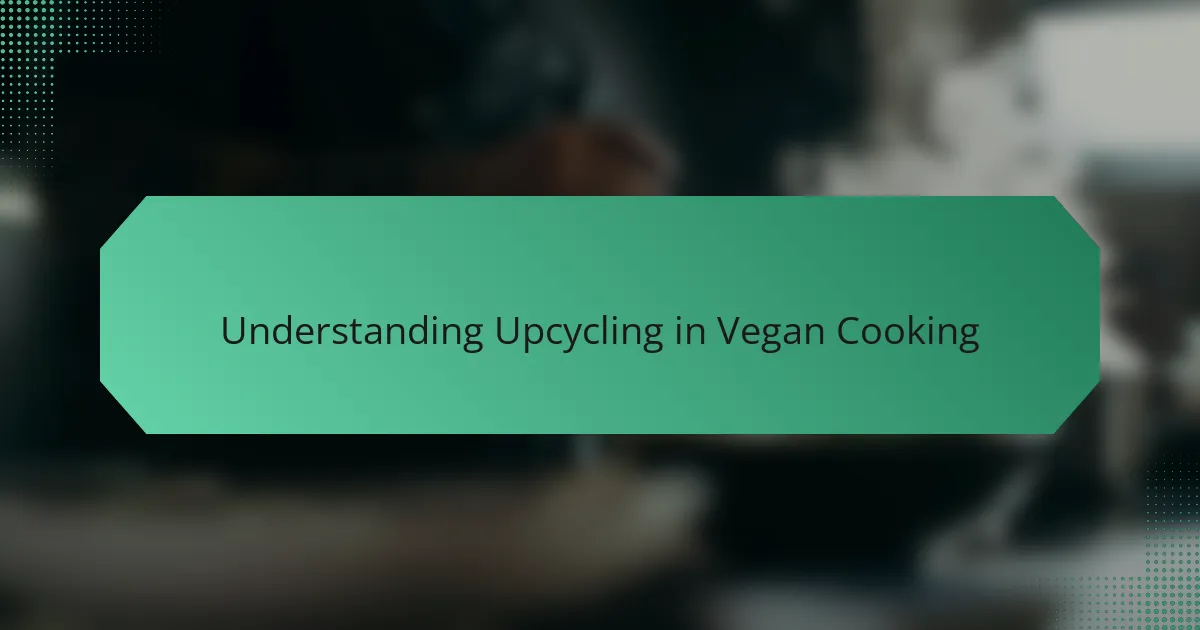
Understanding Upcycling in Vegan Cooking
When I first heard the term “upcycling” in vegan cooking, I wondered if it was just another trendy buzzword. But soon, I realized it’s about seeing ingredients differently—transforming what we might toss aside into something delicious and nourishing. Have you ever stared at a wilting carrot or limp kale and thought, “Is this still good?” That’s where upcycling begins.
For me, upcycling goes beyond saving food; it’s a mindful practice. It’s about respecting every bit of plant-based goodness and challenging the idea that only the freshest, perfect-looking veggies deserve a spot on my plate. This perspective shift made cooking feel more creative and less wasteful, turning leftover scraps into unexpected snacks that surprise and satisfy.
Isn’t it fascinating how upcycling invites us to be resourceful and imaginative in the kitchen? It asks, “What can this humble, forgotten veggie become?” I find joy in experimenting—like turning carrot peelings into crunchy chips or kale stems into flavorful dips. It’s not just cooking; it’s a small act of care for the planet and ourselves.
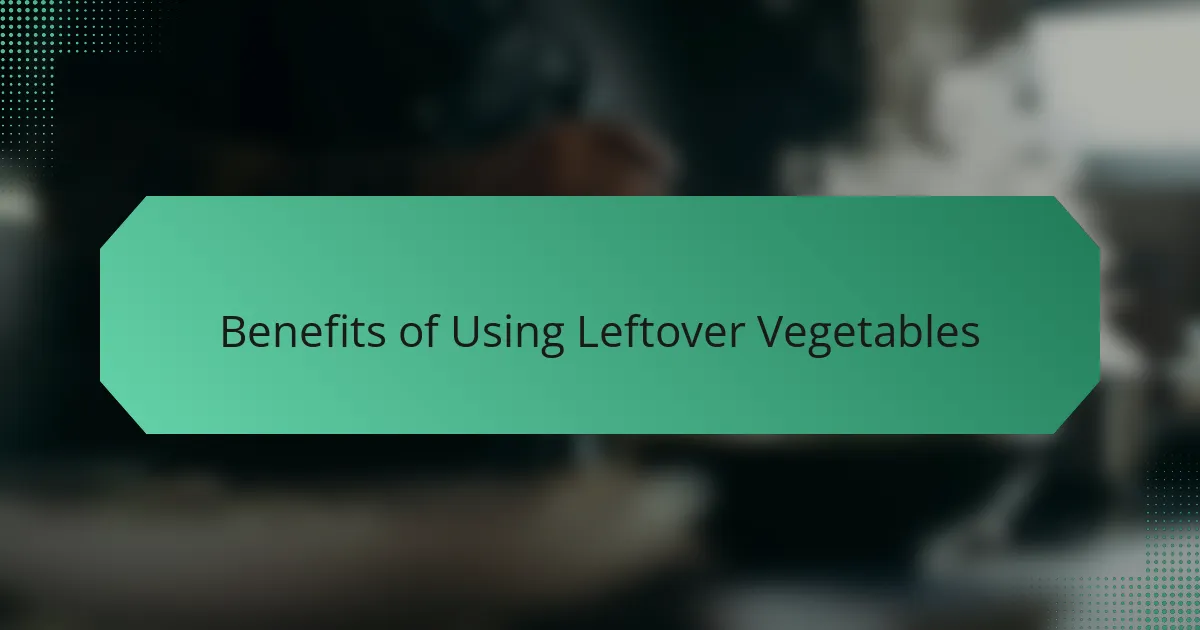
Benefits of Using Leftover Vegetables
Using leftover vegetables isn’t just smart—it’s a small win for the planet. I’ve noticed that when I embrace those bits that usually end up in the compost, I waste much less food. It feels good knowing I’m stretching every veggie’s value instead of tossing it out.
What surprised me most was how these leftover veggies pack a punch in flavor and nutrition. I used to think that only pristine vegetables could make tasty snacks, but peeling back the layers taught me otherwise. Those carrot tops and broccoli stalks? They add unique textures and tastes that I now crave.
Have you ever felt that little spark of creativity when staring into your fridge leftovers? I have, many times. Turning those odds and ends into something tasty is like solving a delicious puzzle. It makes cooking feel playful and rewarding, far beyond just eating.
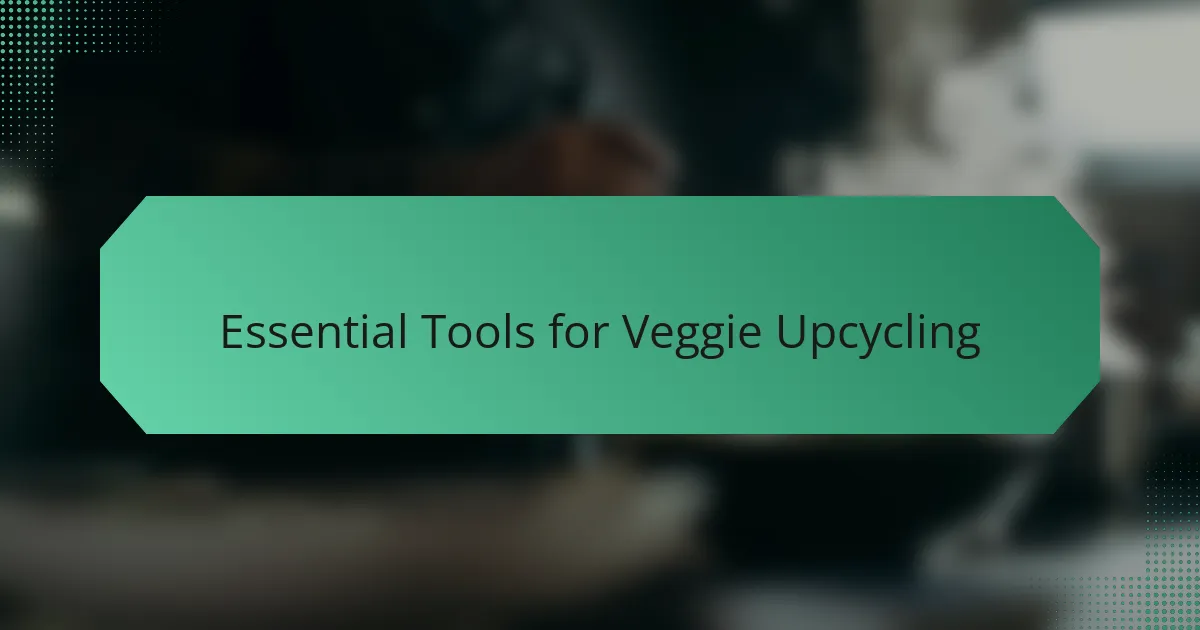
Essential Tools for Veggie Upcycling
When I started upcycling veggies, I quickly realized that having the right tools made all the difference. A good sharp knife is my go-to—it helps me transform even the toughest stems or skins into perfect shapes for snacks without any fuss. Have you ever struggled with dull blades that just bruise your veggies? Trust me, investing in quality knives changed the game for me.
Another tool I can’t live without is my trusty vegetable peeler. It’s amazing how something so simple can turn carrot peelings or cucumber skins into crispy chips with just a little seasoning. Plus, a sturdy cutting board gives me the confidence to chop safely and efficiently, which means I spend less time prepping and more time experimenting.
I also found that having some basic containers or jars around encourages me to store these veggie scraps properly. When I toss peelings into a designated box in the fridge, it’s easier to remember to turn them into broths or snacks later. It’s like having a mini veggie treasure chest, ready to inspire my next upcycling adventure. Do you keep your kitchen organized this way? It really helps keep the momentum going.
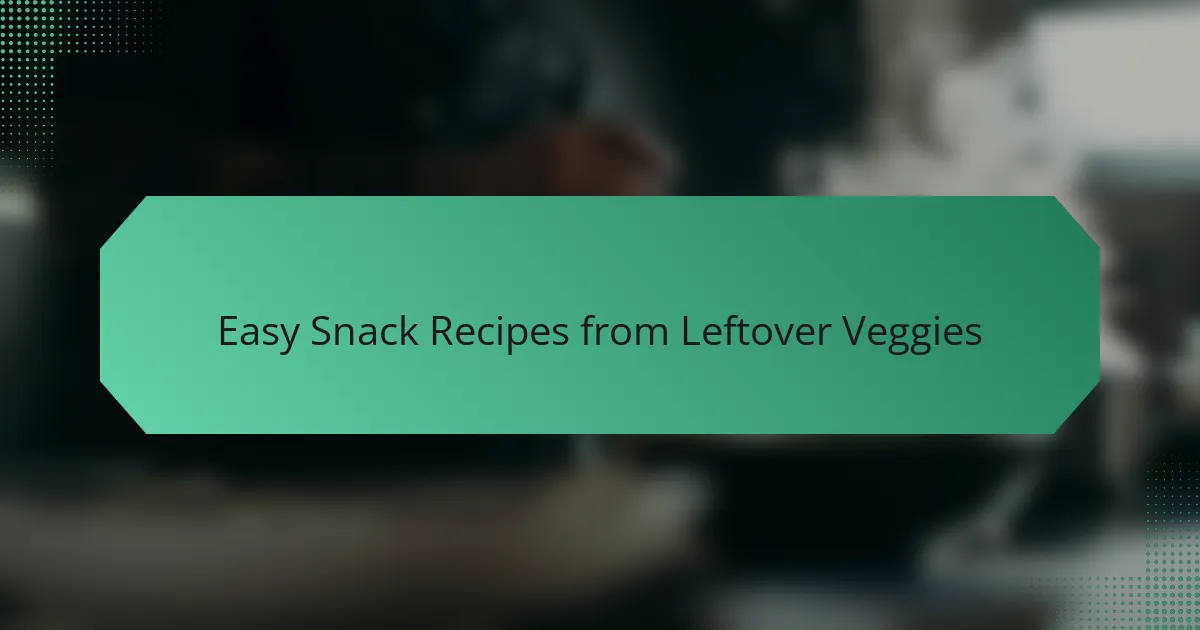
Easy Snack Recipes from Leftover Veggies
One of my favorite ways to upcycle leftover veggies is by making quick veggie chips. Have you ever tried roasting thin slices of carrot peels or zucchini scraps? With just a drizzle of olive oil and a sprinkle of sea salt, they turn into irresistibly crunchy snacks that disappear faster than expected at my house.
Another simple treat I often whip up involves blending leftover broccoli stems into a vibrant hummus. It surprised me how these neglected parts add a subtle sweetness and creamy texture, making the dip feel fresh and wholesome. Don’t you love discovering new flavors hidden in what you’d usually toss away?
Sometimes, I toss chopped veggie ends like bell pepper cores and celery pieces into a quick stir-fry or salad topper. It’s a little kitchen hack that turns plain leftovers into a burst of color and nutrients. Have you noticed how these tiny additions can elevate even the simplest snacks?
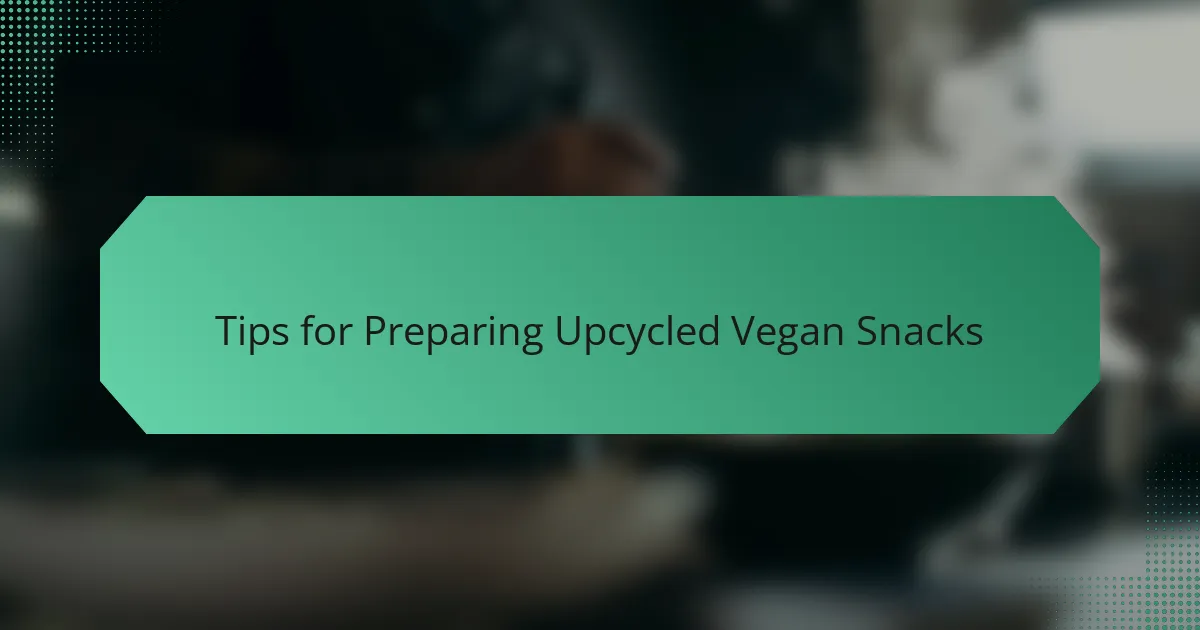
Tips for Preparing Upcycled Vegan Snacks
One tip I always keep in mind is to clean and dry leftover veggies thoroughly before using them in snacks. Moisture can make chips soggy or dips watery, and nothing kills the joy of a crunchy bite like that. Have you ever bitten into a soggy veggie chip and felt a little disappointed? I certainly have, and that’s when I learned the value of proper prep.
Another trick I discovered is to balance flavors carefully when seasoning upcycled snacks. Since some leftover parts like stems or peelings can be slightly bitter or earthy, I like to add a pinch of salt, a dash of lemon juice, or a sprinkle of nutritional yeast for a savory boost. Experimenting with spices can turn a humble scrap into something that truly tantalizes the taste buds.
Lastly, I find that cooking leftovers gently preserves their nutrients and texture better. Instead of over-roasting or boiling, I prefer light roasting or quick sautéing to keep snacks vibrant and flavorful. Have you noticed how a gentle touch with heat can bring out hidden sweetness in veggies you thought were past their prime? That small adjustment makes all the difference in my kitchen.
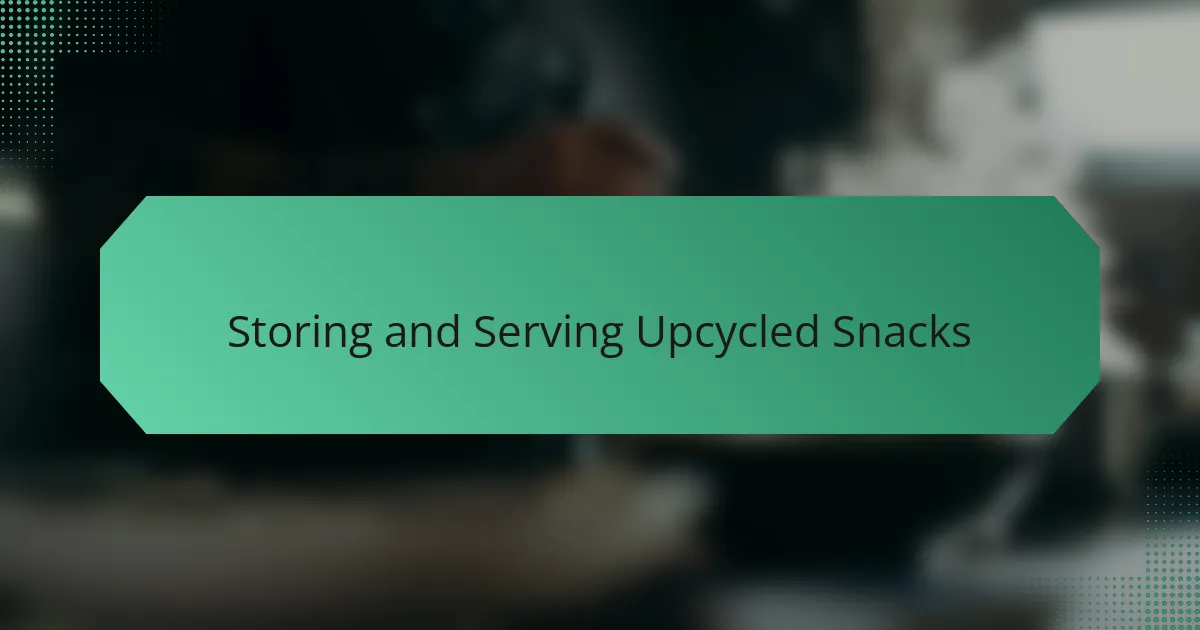
Storing and Serving Upcycled Snacks
Storing upcycled snacks properly became a game-changer for me. I learned that keeping them in airtight containers helps maintain their crunch and freshness, especially with homemade veggie chips. Have you ever opened a container expecting crisp bites, only to find them a bit soggy? That’s why I now make sure to cool snacks completely before storing—they stay crisp longer and keep their flavor intact.
When it comes to serving, I like to bring a bit of fun and simplicity to the table. Presenting upcycled snacks in small bowls or on colorful plates makes them feel special, even if they started as humble scraps. Have you noticed how the right presentation can make a simple snack more inviting? It’s a small touch that turns upcycled veggies into treats that friends and family actually ask for again.
I also found that upcycled snacks are perfect for sharing at gatherings or quick bites during workdays. Since they keep well in the fridge for a few days, I often prepare a batch ahead, which saves time and helps me avoid reaching for less healthy options. Do you ever feel relieved knowing a wholesome snack is ready when hunger strikes? That’s exactly the convenience I’ve come to appreciate most about storing these veggie creations.